2022-09-16
It might be a difficult decision to get and train a service dog. The process requires team alignment, knowledge, commitment, and a lot of time and patience. Training a service dog does not only mean teaching the dog to perform certain tasks but also bonding with him/her and respecting his/her needs the same way he/she is supposed to respect yours.
Since bonding with the service dog is crucial for every training process to be successful, we would like to provide you with some tips on how to bond with your new service dog and determine whether you are ready for that or not.
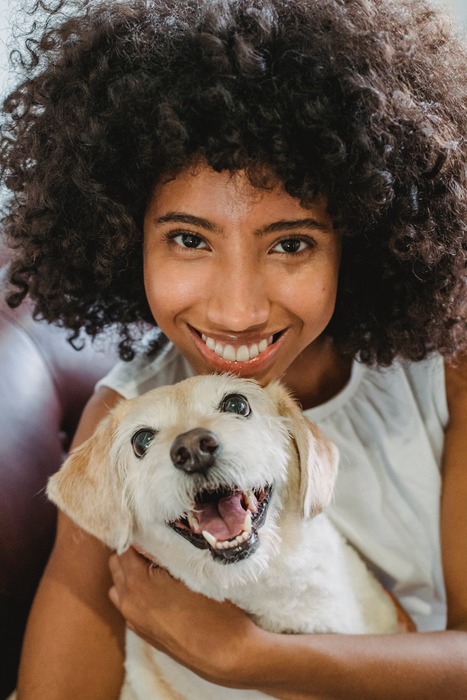
Give Your Dog Time to Adapt
It is quite unrealistic to expect your new pup to immediately develop a bond with you and know what the “rules” are. In case, you got a very young puppy (no younger than 8 weeks old), he/she may seem a bit disoriented and anxious during the first few days. It is your job to make your new paw friend feel comfortable and taken care of in his/her new home. Give him/her some time to adjust to the environment by arranging an area at home for him/her, that will be his/her personal spot. You can place plush items such as a warm blanket, bedding, toys…anything that will make feel your pup feel at home and adjust quicker.
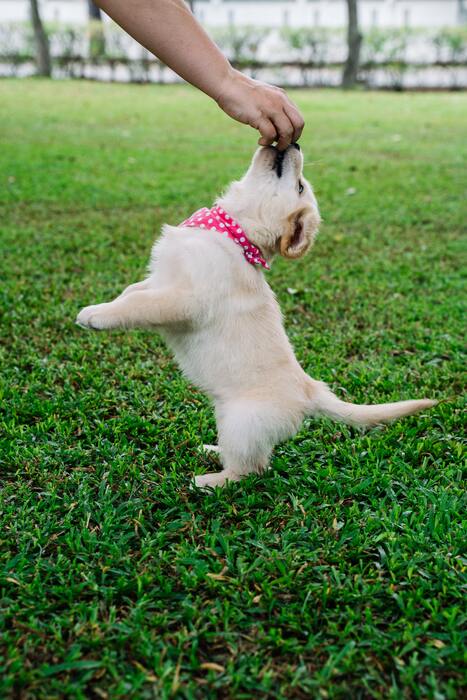
Feeding
Food is considered primary reinforcement, as it meets a basic need namely related to survival. Food, especially in the form of treats/rewards can be utilized not only as a part of training but also as a bonding tool. Since you are the owner (and probably you will be the handler of the dog too), you will need to be the person who takes care of the dog. Hand feeding is recommended for developing trust in your paw friend and helping get used to physical contact. Also, if your dog is still a puppy, you can use food/treats, to reinforce the wanted behaviors at a young age. When your paw friend behaves well, he/she can get a treat. As you can see food can be a powerful tool to bond with your dog!
Playing
By “playing” we do not understand just buying toys for our paw friend and letting him/her unsupervised the whole day... It is just the opposite! Throughout the playing sessions, you can actively interact with your dog and know him/her better. Does he/she enjoy playing roughly, is he/she very energetic or rather calm, and what types of games does he/she enjoy most... All this information will help you determine what type of personality and temperament your pup has, what tasks he/she might be good at in the future (i.e. he/she likes to retrieve items), and what behavioral issues he/she may develop. The better you know your dog, the better you will be able to adapt the training process to achieve the wanted results.
Another important aspect of playing, besides gathering valuable information about your dog’s temperament, is maintaining order. This means that you can assert yourself as the leader, and discourage some wanted behaviors in a calm and easy way, i.e. if your pup tends to bite a bit hard or is prone to domination, you should show that you are the alpha, and you set the rules. Be gentle, but assertive.
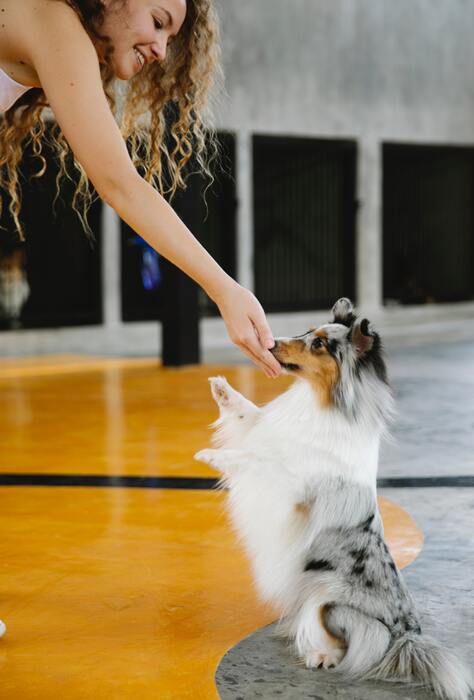
Exercising
Similarly to playing, involving your canine in your jogging sessions, taking long walks and hikes with him/her, will contribute to his/her physical stimulation. There is a theory, that serotonin and dopamine are being released during exercise, which makes you / your paw friend feel better and improve your mood. The more pleasant the activities you and your paw friend engage in together, the more time he/she will want to spend with you.
Training
Here comes the difference between standard dog training and service dog training. The latter includes not only basic obedience but also specific tasks related to the person’s disability. Hence, the second part of the training process is individual and varies from person to person. We have adopted the view that positive reinforcement is the right approach, although it is difficult to tell what approach is the “right” one.
The more respect and understanding you show during training, and the stronger the reinforcement is, the better the results will be. During the training sessions, you and the dog will get attuned to each other and develop some sort of routine.
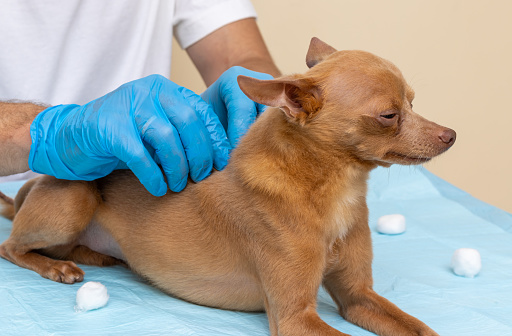
Massaging
Massaging can positively affect the relationship with your dog. It is important to note that your dog should be calm and relaxed prior to massaging him/her. You should not force your paw friend if he/she seems to feel uncomfortable being massaged. As a general rule service dogs should be friendly, calm, and tolerant of physical contact. However, you will need to set up a designated area at your home and as mentioned above, wait for your canine to relax. You should be very gentle and avoid massing body areas that your dog does not feel comfortable with. We do not recommend that you put pressure straight down the spine, the bones, or the spine. Increase the pressure step by step and use circular motions. You should remember to be careful while massaging the pads as you may accidentally trigger the kick instinct.
Tethering
We are not quite into this method as a way to develop a strong bond. However, it can have a positive effect if you have a puppy and if you apply this approach for a short period of time. Tethering in the context of bonding means keeping your canine attached to you via a leash so that he/she can adjust to your routine.
We want to affirm that you should be very cautious and reasonable when tethering your dog. Always prepare supplies (food and water), and always keep an eye on your dog. If utilized incorrectly, tethering may have the opposite effect.
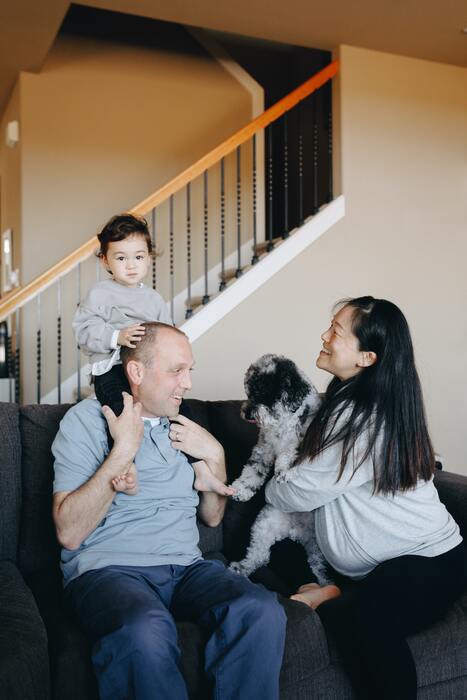
Service Dogs and Other People
By “other people” we understand both family members / close friends and unknown people you can meet during your walks or training sessions. “Can these people affect the training process?”- you may ask. Yes, they can.
As part of the household family members will also interact with the dog and be engaged in his/her socialization. That is why it is essential that you openly discuss what rules will apply to the dog’s raising and training. Family members should follow and respect the rules the handler has set. Since you are the handler, it is up to you, what tasks the dog will perform and how his/her daily routine will look. A lack of a unified approach to the process will only make it more difficult and ineffective. During the training sessions, your family members should not interfere or otherwise distract the dog. Service dogs must remain focused on the handler and the given tasks.
When it comes to passersby, they should also respect the fact that the dog is a service animal and not a pet. Passersby should ask for permission to pet the dog. That is why putting any identification gear on the dog (while still in training or after training has been completed) will be extremely helpful while in public.
We would like to clarify that, although service dogs are deemed medical equipment, they are still living beings, who need to rest, relax, play and interact with the world around them. However, since they play an essential role in a person’s life and their intervention can be even life-saving, there are some rules that should be followed.
Bonding with your paw friend is an essential part of the whole process of raising and training a service dog. The more valuable time you spend with him/her, the stronger the bond, that you will develop, will be.